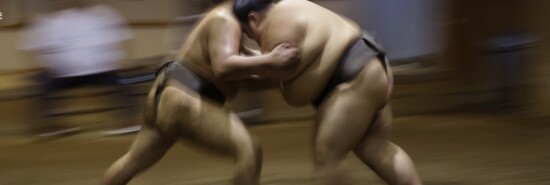
How to pick up a sport
Oliver Bateman
For years, I pushed aside any thoughts of immersing myself in a new sport. I grew up in an athletic family with deep roots in Western Pennsylvania, and that meant much of my sporting culture had arrived “ready to wear,” so to speak. My father started on the offensive line at West Virginia University, one of his cousins enjoyed a journeyman career in Major League Baseball, and my mother — deprived of athletic outlets in the pre-Title IX era — played clarinet in her college band as a means of watching as much football and basketball as possible. By the time I was a preteen, I was wrestling and lifting weights, activities I continued for decades.
From this base, my lifetime spectator sports interests developed. I watched pro and college football with my father. My mother, who loved the Magic Johnson and Michael Jordan eras of pro basketball, followed the NBA. Out of my background in folkstyle wrestling, I learned to enjoy watching freestyle and Greco-Roman, judo, jiu-jitsu, MMA, and even pro wrestling. My grandfathers enjoyed listening to baseball on the radio, so I included that in my rotation. Golf and strength training were hobbies that occupied my weekends; I watched those events when I could. When I began working as a professional writer about 15 years ago, these were the sports I covered.
WINSOME SEARS SAYS CRIME IN DC WAS ‘ISSUE’ IN CAPITALS-WIZARDS ARENA MOVE
That was, quite frankly, a lot. I could justify it on professional grounds: I don’t mind watching hours of this content, not least because, at least some of the time, I’m getting paid for it. More to the point, I was internal to much of it — I could analyze a football game in the manner of someone who had played the sport, explain weightlifting from the perspective of an athlete who had lifted heavy weights themselves, and describe combat sports like a competitor who had tested their prowess against others.
What I had never done, unlike friends who had become association football or Formula One aficionados while living abroad in their 20s, was invest myself wholly in a brand-new sport. It had been easier for many of these folks because they grew up without rooting interests or had perhaps played, say, soccer back in the U.S. but without any sense of its massive foreign footprint.
In 2019, however, I began the process of learning sumo. A sport with an appeal limited primarily to Japan, where it is considered the national sport due to its links to the Shinto religion, sumo’s international presence has grown modestly over the years. Some fans harbor hopes, however faint, that it might one day become an Olympic sport. My initial exposure had come two decades earlier, through David Benjamin’s Sumo: A Thinking Fan’s Guide to Japan’s National Sport, and I remained aware of sumos, like former yokozunas Akebono and Koji Kitao, who crossed over into pro wrestling and MMA.
But following a bit of algorithmic happenstance — a stray YouTube recommendation of footage of an entire 15-day Grand Sumo Tournament that was won, like 44 other such events, by Mongolian giant Hakuho — I immersed myself in sumo. I was struck by the highly technical nature of a sport that, on the surface, looked to most Western observers like two fat men colliding with each other. This journey into the language and culture of Japan through the lens of collisions between fat men was inspired by my uncle, a longtime Foreign Commercial Service officer who had emphasized the importance of language as a gateway to truly understanding a culture.
This process of learning was slow and methodical. I had to remember the rules, study the centuries of recorded history, and review old footage of athletes, something I had rarely needed to do with sports I had followed all my life. Unfamiliarity, paradoxically, made me a more passionate fan. Engagement with sumo demanded my full attention.
The beauty of watching sumo lies in its definitive outcomes and the raw, pure contest of flesh on flesh. Even when following English-language streams by YouTubers like Don Don Two and Sumo Jason, I’m Googling various sumo-related questions in open tabs on my other monitor. With no cultural references or fellow sumo experts in my circle of sports writers — few exist, and the ones who do, like YouTube’s Sumostew, are largely autodidactic — my understanding of the sport was entirely self-driven. Most Western writing on sumo, unlike expatriate writer Robert Whiting’s thoroughly internalized account of Japanese baseball in You Gotta Have Wa, tends to mirror David Benjamin’s approach: lighthearted, bemused, interested, but distant.
My goal has always been to delve deeply into the subjects about which I study and write. Nevertheless, my pursuit of sumo, so far from its point of origin and the community of its enthusiasts, will remain a deeply personal endeavor. Sometimes, the longest way around is the best way to truly come home again. And when a rikishi trades his loincloth for a football helmet, as amateur yokozuna Hidetora Hanada did when he joined the Colorado State University team earlier this year, a certain truth comes to light: at base, all of the pushing and grappling sports are the same, regardless of aesthetic differences. It is the contest of man against man, flesh on flesh, that unites us in a shared state of play. Anybody can see that, no matter what they grew up watching. But only if they take the time to learn.
CLICK HERE TO READ MORE FROM THE WASHINGTON EXAMINER
Oliver Bateman is a journalist, historian, and co-host of the What’s Left? podcast. Visit his website: www.oliverbateman.com.
